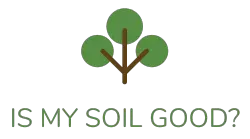We're an affiliate
We hope you love the products we recommend! Just so you know, we may collect a share of sales or other compensation from the links on this page. Thank you if you use our links, we really appreciate it!
It’s important to use potting soil when planting seeds or transferring seedlings to pots or containers. But what happens if you don’t use potting soil right away? Can you still use it later on? Here’s what you need to know about the consequences of not using potting soil immediately.
Table of Contents
What is Potting Soil and Why is it Important?
Potting soil is a type of soil mix that is specifically formulated for use in containers and pots. It is different from regular garden soil in that it is lighter and has a higher ratio of organic matter, such as compost and peat moss. This makes it well-suited for plants that are grown in containers, as it allows for proper drainage and aeration.
Potting soil is important because it provides plants with the nutrients and structure they need to grow and thrive. It also helps to regulate moisture levels in the soil, which is essential for proper plant growth.
What Happens if You Don’t Use Potting Soil Right Away?
If you don’t use potting soil right away, there are a few potential consequences you may encounter. These include:
- Poor plant growth: Without the proper nutrients and structure provided by potting soil, your plants may struggle to grow and thrive. They may be more prone to pests and diseases, and their overall health may be compromised.
- Inconsistent moisture levels: Potting soil is formulated to retain moisture while also allowing for proper drainage. If you use regular garden soil or another type of soil mix, it may not have the same moisture-regulating properties. This can lead to inconsistent moisture levels, which can be detrimental to plant growth.
- Root rot: Root rot is a common problem in plants that are grown in containers. It is caused by excess moisture and poor drainage, which can lead to the roots of the plant becoming waterlogged and rotting. Potting soil is formulated to prevent root rot by providing proper drainage, but if you don’t use it, your plants may be more susceptible to this problem.
- Poor drainage: Poor drainage can also be an issue if you don’t use potting soil. Regular garden soil may not drain as well as potting soil, leading to waterlogged conditions that can harm plants.
Can You Use Potting Soil Later On?
While it’s always best to use potting soil from the start, it is possible to use it later on in the growing process. If you have already planted your seeds or seedlings in regular soil or another type of soil mix, you can transfer them to pots or containers filled with potting soil at a later date.
This may help to improve the health and growth of your plants, but it’s important to be cautious when doing this, as it can be stressful for the plants. Be sure to gently remove the plants from their current soil and carefully transfer them to the potting soil, taking care not to damage their roots. You might also like How to Repot Plants Growing in Potting Soil
Conclusion
Using potting soil is essential for the health and growth of plants grown in pots and containers. If you don’t use it right away, you may encounter problems such as poor plant growth, inconsistent moisture levels, root rot, and poor drainage. While it is possible to use potting soil later on, it is best to use it from the start to ensure the best results for your plants.

